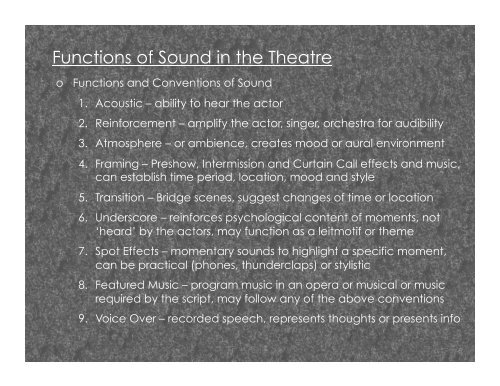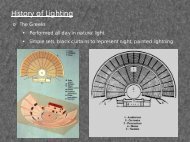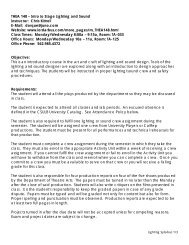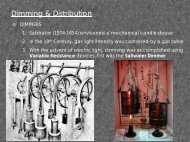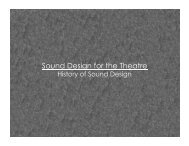Sound Design for the Theatre
Sound Design for the Theatre
Sound Design for the Theatre
You also want an ePaper? Increase the reach of your titles
YUMPU automatically turns print PDFs into web optimized ePapers that Google loves.
Functions of <strong>Sound</strong> in <strong>the</strong> <strong>Theatre</strong><br />
o Functions and Conventions of <strong>Sound</strong><br />
1. Acoustic – ability to hear <strong>the</strong> actor<br />
2. Rein<strong>for</strong>cement – amplify <strong>the</strong> actor, singer, orchestra <strong>for</strong> audibility<br />
3. Atmosphere – or ambience, creates mood or aural environment<br />
4. Framing – Preshow, Intermission and Curtain Call effects and music,<br />
can establish time period, location, mood and style<br />
5. Transition – Bridge scenes, suggest changes of time or location<br />
6. Underscore – rein<strong>for</strong>ces psychological content of moments, not<br />
‘heard’ by <strong>the</strong> actors, may function as a leitmotif or <strong>the</strong>me<br />
7. Spot Effects – momentary sounds to highlight a specific moment,<br />
can be practical (phones, thunderclaps) or stylistic<br />
8. Featured Music – program music in an opera or musical or music<br />
required by <strong>the</strong> script, may follow any of <strong>the</strong> above conventions<br />
9. Voice Over – recorded speech, represents thoughts or presents info


